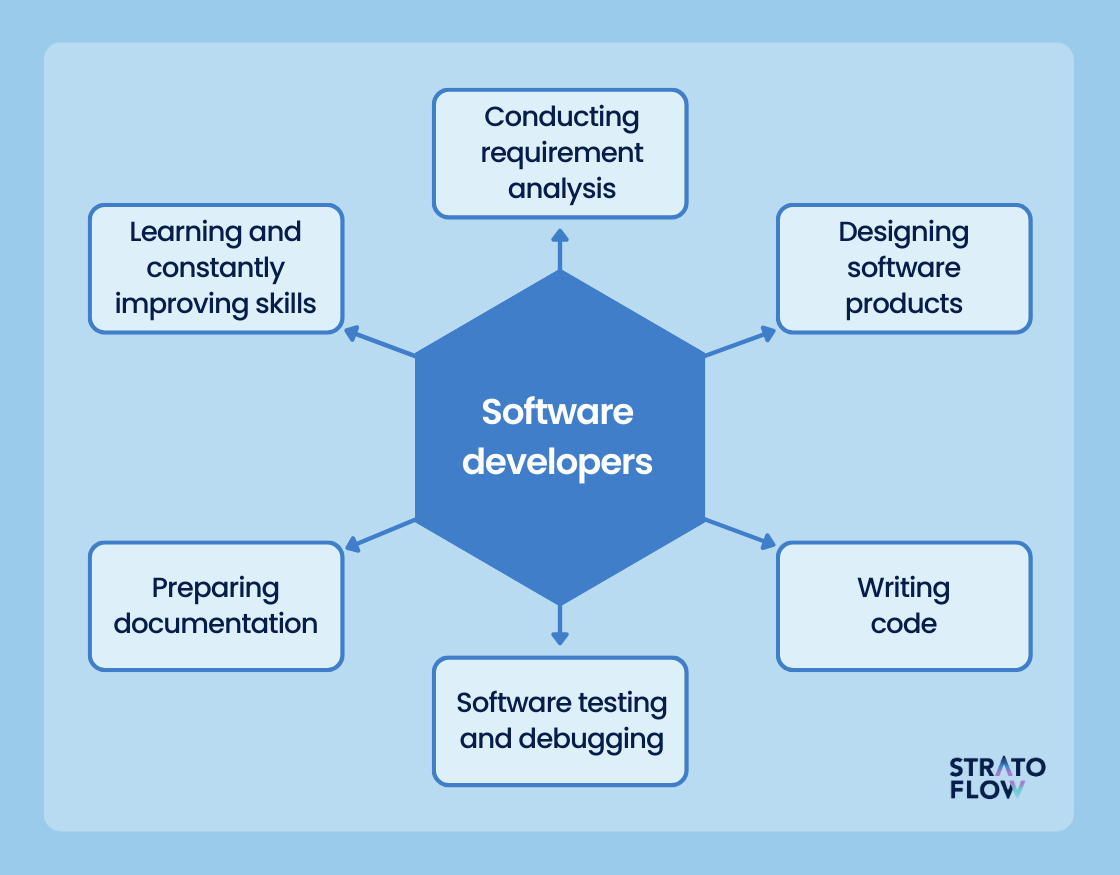Locating the Ideal Software Development Partner for Innovative Solutions
Locating the Ideal Software Development Partner for Innovative Solutions
Blog Article
Dedicated Developers vs. In-House Teams: Which Is Right for You?
The decision in between using dedicated designers and maintaining an internal team is a considerable one that can influence the trajectory of your projects and general company strategy. Devoted designers give a level of flexibility and specific competence that can be helpful for particular, temporary efforts. Alternatively, in-house teams add to a cohesive business culture and a nuanced understanding of long-lasting goals. By analyzing important aspects such as budget plan, job extent, and wanted control, you can better figure out which strategy straightens with your business needs. Nevertheless, the effects of this choice expand past prompt outcomes-- think about the broader influence on your business landscape.
Recognizing Dedicated Developers
The growing need for specialized skills in the technology industry has actually caused the introduction of committed programmers as a viable solution for numerous organizations. These professionals are normally gotten on a task basis, enabling business to leverage details experience without the long-term dedication connected with full time hires. Dedicated developers are often embedded within a client's team, giving versatility and scalability to meet project needs.
This design allows organizations to access a global talent pool, which is specifically helpful in a swiftly evolving technical landscape. Committed developers can be sourced from different geographical locations, making certain that firms can discover the best capability at competitive rates. They typically bring a wealth of experience and understanding, having functioned on diverse projects across various markets.
In addition, dedicated programmers can focus exclusively on the tasks available, boosting performance and efficiency. They are geared up to integrate effortlessly right into existing process, working together carefully with internal teams to accomplish job goals. This method not just reduces the burden of recruitment and training but also permits organizations to continue to be dexterous, adjusting swiftly to changing market needs and technical developments.
Advantages of In-House Teams

Furthermore, in-house groups often tend to have a deeper understanding of the firm's goal, worths, and goals. This alignment can improve employee interaction and inspiration, as group members really feel more connected to their job and the company's success. Additionally, having a devoted in-house group allows for better alignment of objectives and techniques, as these participants are constantly concentrated on the business's top priorities.
In-house teams likewise promote quicker decision-making procedures, as they can respond extra rapidly to adjustments and challenges. The well established connections and experience with business methods allow for streamlined workflows and minimized miscommunication. Ultimately, the mix of a natural society, positioning with business goals, and effective interaction makes in-house groups a valuable property for several organizations, especially those looking to cultivate long-term growth and innovation.
Cost Considerations
When assessing cost considerations, both specialized programmers and internal groups present distinct monetary effects for organizations. Involving dedicated programmers normally entails a pay-per-project or per hour price design, which can be affordable for businesses with fluctuating job demands. This approach permits adaptability in scaling sources up or down, making certain that business only spend for the services they require.
On the other hand, in-house groups involve repaired prices, consisting of salaries, advantages, and overhead costs such as office and devices. While this model uses greater control and prompt accessibility of sources, it may lead to higher long-term costs, especially if the workload does his comment is here not warrant a full time staff.
In addition, companies must take into consideration the surprise expenses related to employment and training of in-house workers, which can better strain spending plans. Sometimes, the time and sources invested in managing an internal group can interfere with the organization's core organization purposes.

Job Management and Flexibility
Job management and versatility are important aspects that influence the selection between devoted developers and internal groups. Devoted teams usually have developed processes for handling tasks effectively, leveraging specific techniques like Agile or Scrum, which assist in repetitive progress and flexibility.

Ultimately, the selection in between specialized designers and in-house groups hinges on the preferred level of adaptability and the certain task management needs. Business have to evaluate their functional dynamics, job intricacy, and source schedule to figure out which option aligns finest with their strategic goals.
Making the Right Option
Selecting the best growth approach-- specialized programmers or internal groups-- calls for a mindful assessment of various elements that line up with a firm's tactical goals. Conversely, internal groups can provide much better connection and assimilation with existing personnel.
Next, assess your budget plan. Committed programmers usually present a cost-efficient remedy for temporary tasks, while in-house groups may incur greater long-term expenses as a result of incomes, benefits, and expenses expenses. Assess the degree of control and partnership desired; in-house groups commonly promote stronger interaction and placement with firm culture.
Additionally, consider the time frame. If instant outcomes are needed, dedicated designers can be onboarded quickly, whereas developing an internal group takes some time for recruitment and training. Finally, evaluate the long-lasting vision of your company. If continual advancement is important, buying an in-house group may generate better returns over time. Ultimately, the decision depends upon an extensive analysis of these elements, guaranteeing placement with your firm's general goals and operational demands.
Verdict
To conclude, the decision in between dedicated programmers and in-house teams depends upon task demands and business goals. Devoted designers give flexibility and customized know-how, making them suitable for short-term initiatives. Conversely, in-house groups grow a cohesive culture and much deeper positioning with lasting goals. Mindful analysis of spending plan restrictions, job timelines, and desired control degrees is vital for figuring out the most proper technique, making sure positioning with critical priorities and operational effectiveness.
The choice in between utilizing dedicated developers and preserving an internal team is a significant one that can influence the trajectory of your jobs and total organization technique.Task administration and flexibility are important elements that influence the option between devoted programmers and in-house groups. dedicated development team.In contrast, internal teams may excel in maintaining a regular task management structure due to their knowledge with the organization's culture and long-term goals. Committed developers usually provide a cost-effective solution for temporary jobs, while internal teams might sustain higher long-term expenditures due to wages, benefits, and overhead prices.In verdict, the decision in between in-house teams and dedicated developers pivots on job needs and organizational goals
Report this page